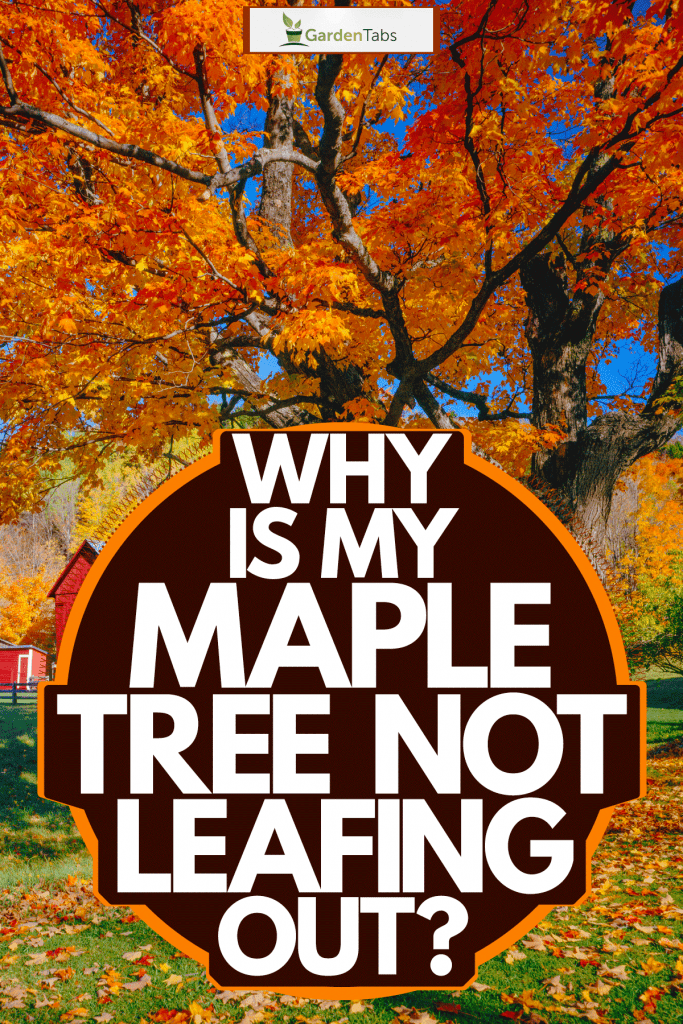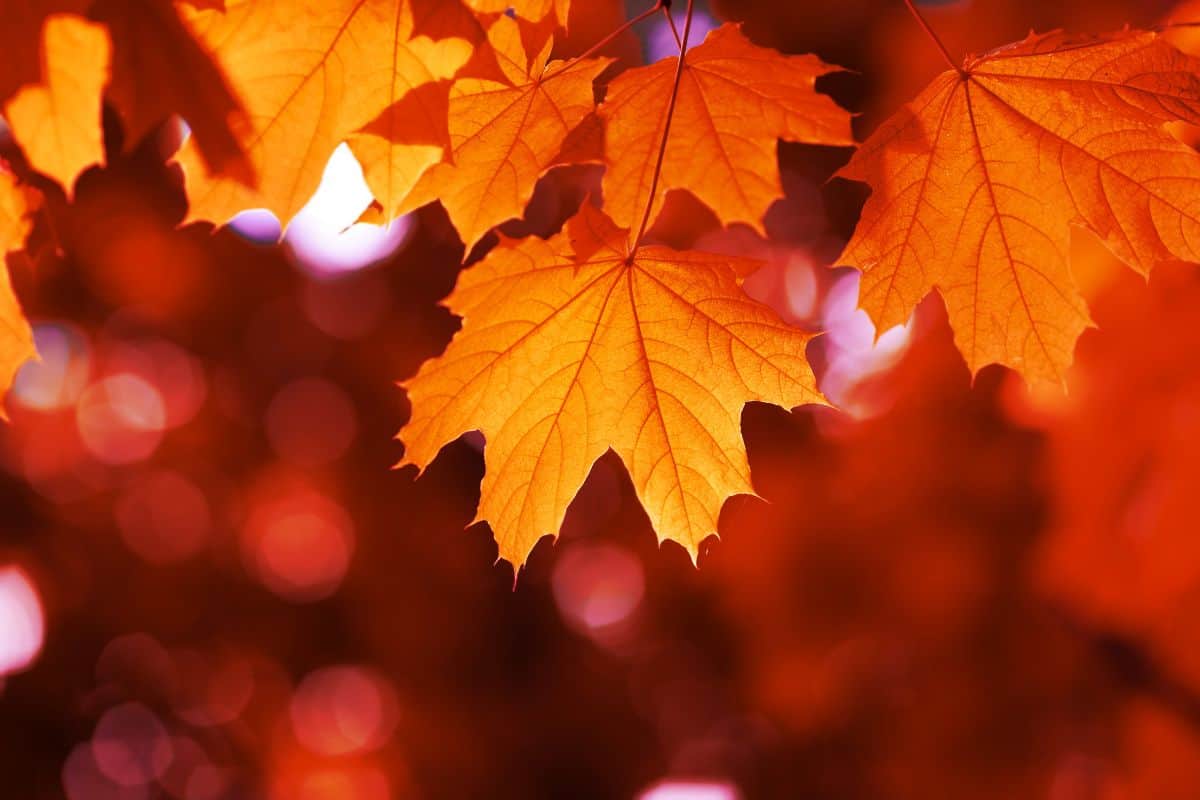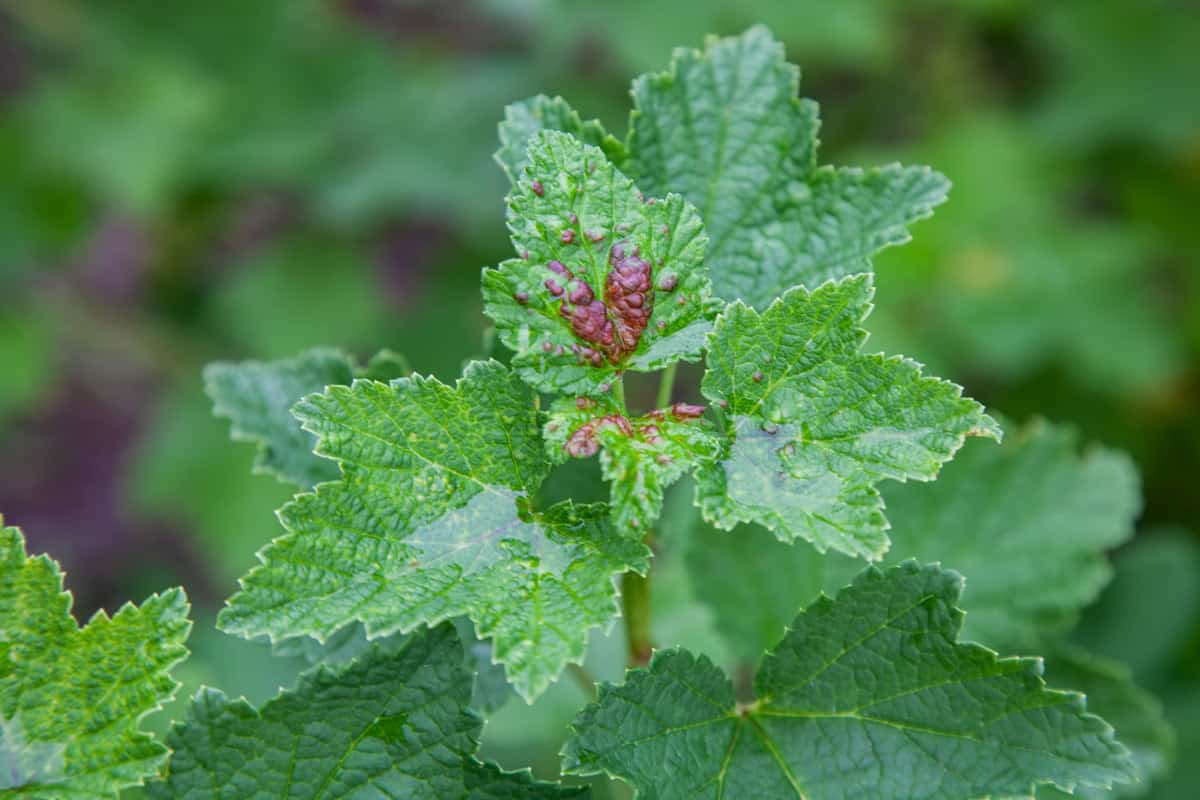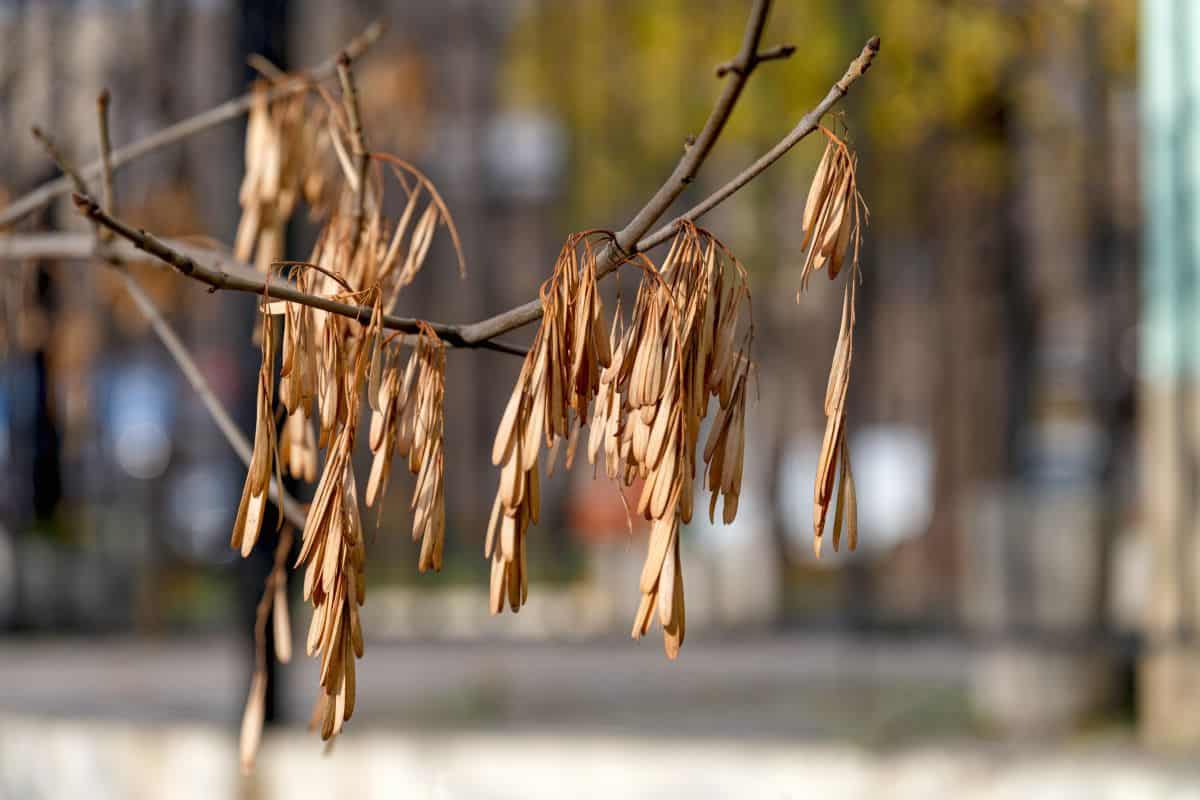Maple trees range from small ornamental trees to 100-foot behemoths. This variety, and their attractive leaf shape, make them common landscape additions. However, your maple tree is not properly leafing out come spring and you want to know why. In this post, we have scoured extension offices and the internet to provide a thorough answer to your maple tree query.
Maple trees fail to leaf out in the spring for many reasons. These reasons range from fungal issues, to insects, to problems with growing conditions. The primary causes of maple trees not leafing out are as follows:
- Improper Growing Conditions
- Unusual Winter or Spring Weather
- Verticillium Wilt
- Anthracnose Tree Disease
- Root Rot
- Insect, Mite, or Bacterial Infestations
- Sustained Damage
Keep reading the rest of this post for details on each of the above potential maple tree issues. This post provides a guide to identifying the particular problem with your tree and tips for how to encourage your tree to leaf out. In addition, we answer several questions related to the topic of this post.

Encouraging Your Maple Tree to Leaf Out
Usually, when a tree leaves out slowly, improperly, or not at all, it is assumed there is a serious problem with the tree. Serious problems include verticillium wilt, anthracnose tree disease, root rot, insect or mite infestation, and sustained damage.
However, sometimes the issues are far more benign such as improper growing conditions and unusual weather. In the next several subsections, we will cover both the serious and less serious causes of maple trees failing to leaf.
Improper Growing Conditions
Initially, it is paramount to ensure that your maple tree has the proper growing conditions. This means the right microclimate, nutrients, soil type, watering regimen, and growing zone for the species of tree in question. The recommendations below are just general, as there are over 100 species of maple trees. For more specific recommendations, research the species you are working with.
Microclimate
In terms of microclimate, exposure to high levels of pollution (such as next to a busy road) and lack of root space (such as sandwiched between concrete or asphalt elements) are common issues that can halt and slow leaf growth. Unfortunately, solving either of these issues is quite difficult but adding more water or nutrients can help lessen the impact of the problem.
Nutrients and pH
Maples prefer soil with the proper amount of the macronutrients of nitrogen, phosphorus, and potassium, a wide array of micronutrients such as iron, and the proper pH. If any major nutrients are lacking or the acidity is improper, your tree may not bud and/or leaf.
Click here for an at-home soil test from Amazon.
Conduct an at-home soil test to help identify which nutrient might be lacking. Tree spikes or granule top spread fertilizer are both popular and cheap ways to feed your maple tree.
Water
Maple trees usually prefer a lot of water so can be sensitive to drought or overcrowding. If your area has experienced drought or if your irrigation system is malfunctioning, your maple tree might not be leafing because of a lack of water. Test the soil with your hand; it should be moist to the touch. If not, start regularly watering to help encourage proper leaf growth.
Soil Type
Generally, maples prefer organic-rich relatively well-drained soils. This means the soil holds water but does not stay sopping wet. For large trees, it is impossible to significantly change the soil type. However, it might be worth repotting or replanting small trees if you expect they have very poor soil.
Hardiness Zone
USDA hardiness zones are measures of which climate and weather areas a tree or plant does well in. Find your species of maple to determine which zone it does well in. You can find which zone you live in here. If you have a maple inappropriate for your zone, you might have to take special care to keep the tree at the proper temperature in summer or winter and properly watered throughout the year.
Unusual Winter or Spring Weather

Sometimes, warm snaps in winter or cold springs will slow or halt your maple tree from leafing properly. These issues are usually temporary and will solve themselves with time or perhaps another full year of growth.
A warm spell in winter can trick your maple into budding out. Then, when seasonal weather returns, the buds freeze and die. Afterward, when the true spring arrives, the tree is slow to leaf because it already has used energy budding out in the winter. Sometimes this can cause a failed leafing followed by a successful one later in the summer or spring.
In a similar process, a cold or prolonged spring can interrupt your maple tree's usual cycle. In this case, the leafing process is usually just prolonged and slowed. Once the weather fully warms, your tree will bud out as expected.
Verticillium Wilt
Verticillium wilt is a very serious fungal disease that attacks maple trees. This fungus infects the wood of the tree and inhibits the movement of water and nutrients throughout and between the roots and branches. Prune off a sick branch of the tree or carve into a branch to inspect it for verticillium wilt.
If there is a dark ring or dark streaks around the cross-section of the tree you might have verticillium wilt. Watch the following YouTube video for more information on this type of wilt and a good shot on what infected maple wood looks like:
Unfortunately, there is no great cure for verticillium wilt. If you only have a partial infestation, it is recommended that you prune off all infected branches and monitor your tree closely. Ensuring proper growing conditions will also help your tree naturally fight the disease. However, if the wilt is taking over your tree, the best option is to fully remove the tree for your yard.
Anthracnose Tree Disease
Anthracnose tree disease, another fungal infection, is common among a wide range of plants and trees. It is most prevalent in wet and chillier spring conditions. Look for dark spots on buds or branches to identify this fungus. It can cause young leaves to drop or buds to fail to open.

Generally, the best way to treat this disease is to remove dropped leaves and branches from around the tree every winter as these act to harbor the fungus. Also, make sure to prune off all dead branches. Fortunately, this disease is not deadly but may haunt your tree for many seasons. As always, making sure your maple has the best growing conditions is a good way to help out the tree's natural immune system.
Root Rot
Root rot, another fungal infection, attacks the soil and roots of your maple tree. This disease is caused by overwatered soil or soil that drains poorly. If you have a tree acting diseased with no infected symptoms on the branches or leaves, root rot could be the culprit. This is particularly the case if you observe prolonged wet conditions.
To treat, allow the soil around the tree to thoroughly dry before rewatering. You can test this by digging test holes around the tree. There is no effective chemical treatment. A healthy tree will usually be able to fully recover from properly treated root rot.
Insect, Mite, or Bacterial Infestations
Insects, mites, and bacteria also can attack maple trees. These pests cause bud discoloration, bark loss, slow growth, and more. They are particularly insidious when the pest rings the trunk or branch of your maple which slows the uptake of moisture and nutrients.

Look for the infestation and use the internet and extension offices to help identify the problem. If you still are not sure, bring the culprit into your local nursery in picture form or in a plastic baggie (to avoid the spread of the pest). Then treat the pest as recommended.
For gall mites, follow the recommendations of this great article: How To Get Rid Of Gall Mites [Inc. On Maple Trees And On Fuchsia].
Sustained Damage
Sometimes, wind or construction damage can cause maple trees to not leaf out. Usually, these issues are very obvious but sometimes construction damage occurs to roots that are distant from the trunk of the tree. If the damage is not super serious, give your maple a season or two of proper growing conditions and it is likely to fully recover.
How Do You Revive A Dying Maple?

Reviving a dying maple requires that you take all steps to provide the ideal growing conditions. Essentially, identify the species of maple in question and fertilize and water as required. For pests, treat as recommended above or by researching the specific issue or by following the recommendations from your local nursery.
If properly revived you can expect the tree to live a long life. To learn more about maple tree lifespans read this article: How Long Do Maple Trees Live? [By Type Of Maple].
Should You Remove Dead Leaves From A Maple?
Dead leaves on maple trees are the result of two main processes. The first process is the natural fall senescence of the broad leaves. The other is leaf die off as a result of pest infestation. For the natural turn of the green leaves to red and brown, let the dying leaves fall on their own; the maple is actually reabsorbing the nutrients from the leaves to use next year.
However, if leaves are dying unseasonally and as a result of disease, it is wise to remove them from the maple. Otherwise, the dead leaves can act as a harbor for the disease.
In Closing
In this post, we have answered the question of why your maple tree may not be leafing out. In addition, we make recommendations on how to encourage your maple to leaf for each common problem outlined herein. In addition, we provide the answers to a few related questions. Good luck!

